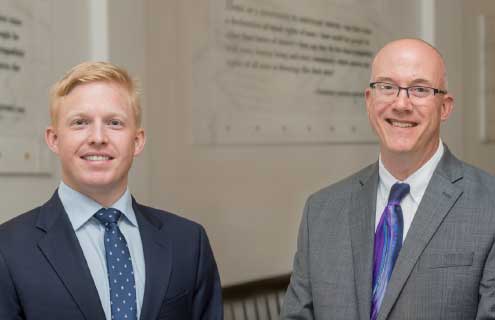After another successful year of captive growth, Vermont’s Ian Davis and David Provost reveal what plans are in place for 2020 as well as the state’s key priorities
Are you happy with how 2019 panned out for Vermont’s captive insurance market?
Ian Davis: We are very pleased with the quality of our 22 new captives. By all accounts, it was a strong year for us as well as a consistent one given our growth trajectory over the last five to 10 years. For the first time in the last few years, we saw net new captive growth and given the hardening market, we are very pleased with where we’re headed.
David Provost: This year is off to a good start. We have already licensed four captives and have received another application to be reviewed. I think the hard market is going to have a significant impact this year. In early 2019 we started hearing from a few companies that the market is hardening, the reinsurance market was definitely turning hard and now it’s all over the news that rates, availability, and capacity are all tightening up. I have heard some people are comparing it to the kind of hard market we experienced in the mid-1980s.
Because of this, we are seeing a lot of companies with a reduced portfolio of reinsurers or having to retain more risk themselves before the reinsurers will take it, which indicates the industry has entered a tough market. It’s bad for business but good for captive business.
What plans do you have in place for 2020?
Provost: We do not set a goal for the number of captives to license each year because it counters our belief of having the highest standards. We always want to be on the list of places that people want to apply, but if we had a goal of 25 and only had 25 applications we would have to accept everybody. We will reject applications when they need to be turned down.
Davis: Echoing what Provost said, we don’t have a set goal in mind when we begin the year. We strive to create an environment that is accommodating to new formations and existing captive growth.
We create that environment through our regulation, and we have a package of new legislative proposals that have been introduced that we’re confident will help grow the industry while maintaining our state’s prudent regulatory standards. This year’s bill introduces several technical amendments that we’re hopeful will go through and that we think will help drive and increase business in the state.
Provost: We are looking to tweak the cell captive law to allow cells to do anything that a regular captive would do and remove any kind of restrictions that might be there—not that there are many but we want to make it clear that a cell is a captive entity and is meant to be an insurance business, making it a level playing field. One of the things we find when the statute is unclear is that if a business doesn’t see itself mirrored in the statute then the business may choose to locate someplace where it is able to see what it wants to do in the statute. Although companies appreciate regulatory flexibility, they would rather see a clear path in the law.
We are also simplifying the disclosure for agency captives; we still want to make sure there’s proper disclosure, but we hope to make it a little easier to comply. We are also asking the legislature to give us some flexibility in the minimum capital of dormant captives.
In addition, we are looking to adopt the same investment standards that we adopted last year to apply to any company other than a pure captive that had to follow the old investment rules.
We also have a couple of accreditation standards to fit in there too.
We had another captive this year convert from a cell captive to a full-blown captive on its own.
That has happened at least twice now and reflects well on the concept of using a cell as an incubator.
What other trends are you seeing in the market right now?
Provost: We haven’t ever been a specialist domicile, even this year the 22 new captives were from all different industries, from healthcare, manufacturers, hospitals, professional service firms with all types of captives too such as pure, risk retention groups, affiliated reinsurers, cell companies and special purpose companies. We’re not reliant on one particular sector of business.
Davis: One area in particular that we see sustained growth is in sponsored and cell captive activity.
Vermont is now home to 37 cell facilities and over 200 cells. Cells continue to be a great tool for companies to incubate the captive concept and, in many cases, eventually transition to a single-parent captive.
We’re hopeful that our new legislative proposals will help to support the continued utilisation of cell captives by small and mid-sized companies.
What are the state’s key priorities in terms of captive insurance?
Provost: Keeping up our standards and making sure we follow our accreditation standards, which includes completing exams timely and effectively. I think it is also important to be out and present in the marketplace to make sure people know that Vermont is on the list when considering captives and providing education to the rest of the world to make sure they’re aware of captive insurance and aware of Vermont.
There are a number of issues facing the broader captive insurance industry that the state is actively involved in – including attracting the next generation of captive leaders, ensuring that the captive concept is understood and protected, and promoting best practices in the industry. All of these issues affect Vermont and we continue to partner with the VCIA and other captive advocates in addressing them. These are complex issues and will remain key priorities for us in the years ahead.





